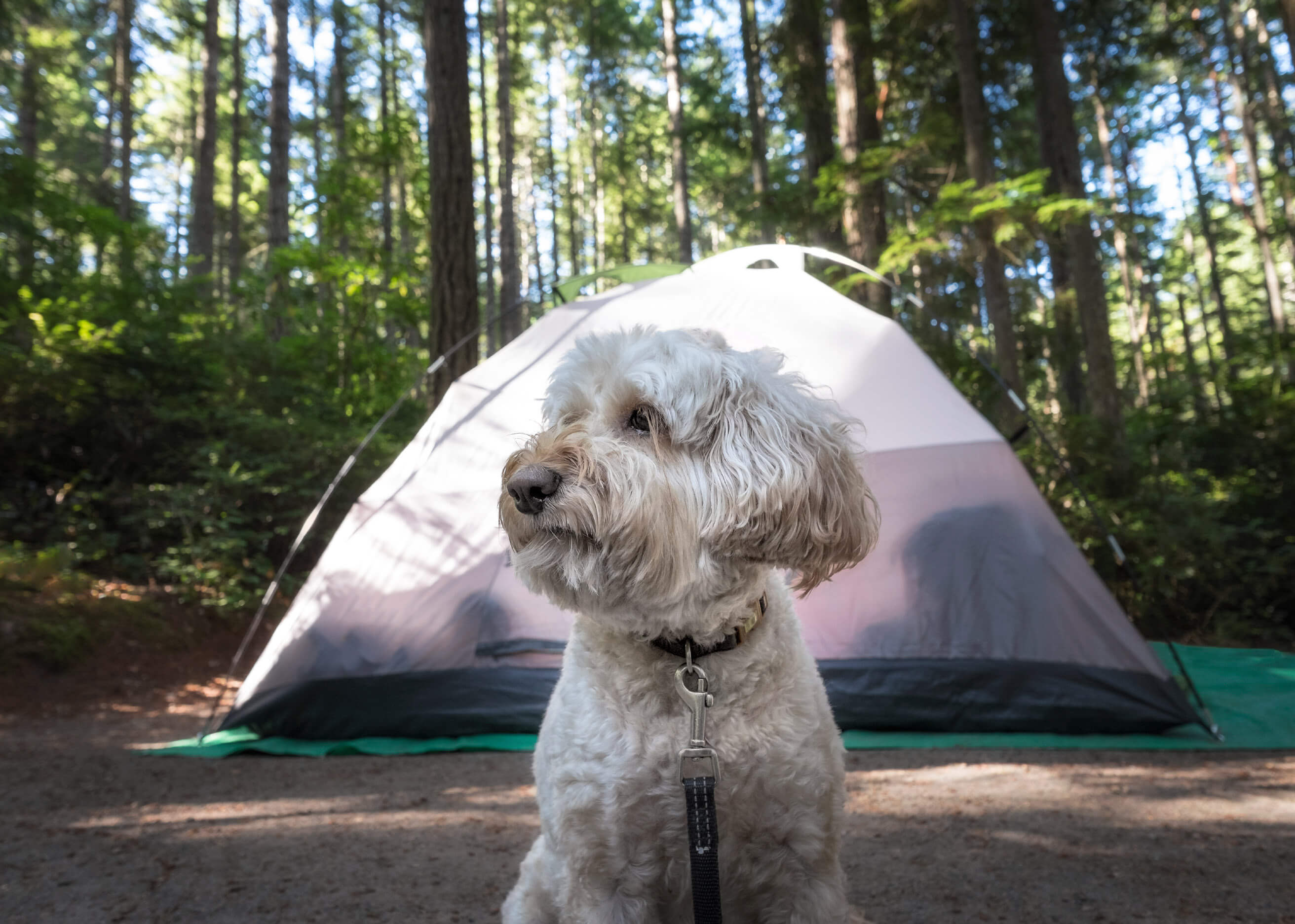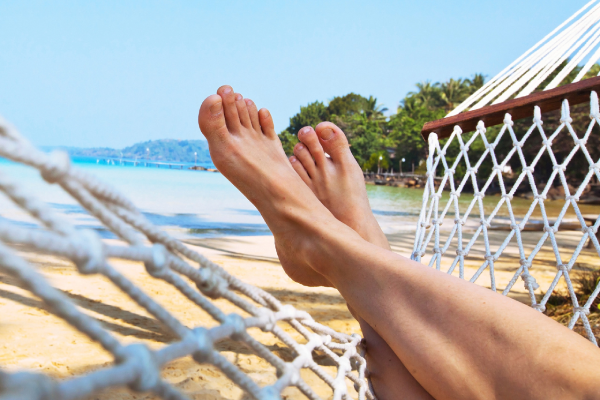-
1. Check the rules
Before anything else, you’ll want to check that your dog is allowed in the camping area. Check the website or ring ahead of time to ask. Also, find out about any specific conditions the area might have, such leash requirements or proof of vaccination.
Keep in mind that if you’re planning for your trip to include a visit to a national park, you’ll have to keep your four-legged buddy at home: dogs aren’t allowed in most national parks in Australia, including beach national parks.
2. Doggie health check-up
Make sure your dog is in general good health and up to date with vaccinations and flea and tick protection before you leave. You should also check your campground to see if you need to bring proof of any vaccinations. It may also be a good time to think about pet insurance, to be on the safe side.
3. Don’t get lost!
No pet owner wants the distress of losing their four-legged friend. To be safe, you may want to get your dog microchipped if they’re not already. At the very least, make sure they have a proper collar with identification tags that include your contact information. Keep in mind too that although laws vary from state to state and council to council, dogs can only be off the leash in designated off-leash areas. Tip: Add another tag with the name and number of the campground you’re staying at for speedy returns if your pup wanders off. And if you’re likely to be somewhere where mobile reception is patchy, you might want to include contact details for a friend back home they can call instead.
4. Get your dog used to nature first
Let’s face it: some dogs are more outdoorsy than others. If your pooch is of the more pampered type, get them used to the great outdoors before your camping trip, so they don’t get overwhelmed and tired out from all the new sights, sounds and experiences. Take them for a hike, or more regular walks around nearby dog-friendly nature reserves.
5. Food and water
It sounds obvious, but make sure you bring enough food and water for your pup to last the whole camping trip – and remember that they will probably need more water than usual. Don’t forget bowls to serve it up in too!
6. Doggie first aid kit
Be prepared in case your poor pooch gets a thorn caught in their paw – pets’ foot pads are more sensitive than you might think. Your vet can prescribe an appropriate pain reliever, and paw balm is a good thing to have on hand to soothe sore, dry or cracked paws at the end of the day. You might also want to bring a pet-safe fly repellent, and perhaps a dog ear cleanser to safely remove dirt after a session rolling around in the leaves.
7. Stay warm and dry
Dogs may be descendants of wild animals, but chances are your pup is no more used to cold nights sleeping in a tent than you are. Bring some doggie blankets and rug up together to keep cosy at night. If your dog is sleeping outside, a carrier can be a good haven from rain and wind.
8. Pick up after your pet
Other campers will love you for being a polite pet owner, and so will the environment. Bring along plenty of doggie waste bags and pick up after your pooch. If there is no rubbish bin available your next best option is to bury the waste, so bring along a little folding shovel.
9. Leash up
Of course, where it’s safe and legal you’ll want to give your dog time to run wild and free, but it’s important to have a leash on hand to keep them under control when you need to. No matter how well-behaved your pup is, the new sights and smells can cause a lot of excitement, and you don’t want them running into any danger. Tip: Bring a spare leash in case one breaks!
10. Keep your dog safe and close at night
Don’t let your dog wander unleashed while you’re sleeping. If they decide to chase after some nocturnal critters, it can quickly become dangerous. One option is to have them sleep in your tent with you (bonus: warm cuddles to keep you cosy!), but if that’s not possible try to give them their own enclosed place to sleep (like a carrier if they are used to it), or safely tether them nearby.
Camping with your dog


Looking for Pet Insurance?
They bring out your best. Help protect them with Medibank Pet Insurance.
Three updated cover levels now available!ꭥ Plus, health members save 10% on premiums.# T&Cs apply.
Things you should know
Medibank Pet Insurance policies entered into for the first time prior to 30 August 2023 and subsequent renewals of those policies are issued by The Hollard Insurance Company Pty Ltd ABN 78 090 584 473, AFSL 241436, arranged and administered by PetSure (Australia) Pty Ltd ABN 95 075 949 923, AFSL 420183 (PetSure) and promoted and distributed by PetSure’s Authorised Representative (AR) Medibank Private Limited ABN 47 080 890 259, AR 286089 (Medibank).
Medibank Pet Insurance policies entered into for the first time on or after 30 August 2023, and subsequent renewals of those policies are issued by PetSure and promoted and distributed by PetSure’s AR, Medibank.
Any advice provided is general only and does not take into account your individual objectives, financial situation or needs. Please consider the Product Disclosure Statement (PDS) ensure this product meets your needs before purchasing, or choosing to continue with the product. PDS and Target Market Determination available at medibank.com.au/pet-insurance.
-
How to set up your bedroom for better sleep
The sleep experts share some secrets.
-
5 healthy habits (and how to keep them)
New Year's resolutions are easy to make and hard to keep. Discover how to make healthy habits for 2024.
-
How to feel more connected this festive season
Feeling stressed or lonely this festive season?
-
Life’s a beach
If you want to take it easy at the beach, start by making the trip easier on yourself. Cameron Williams reveals the discoveries that made his time at the beach more enjoyable.
-
Learn how small bursts of movement can have a positive impact on employee wellbeing
-
How to do a digital detox
Reduce screen time with a digital detox, and improve your mental health and wellbeing.





